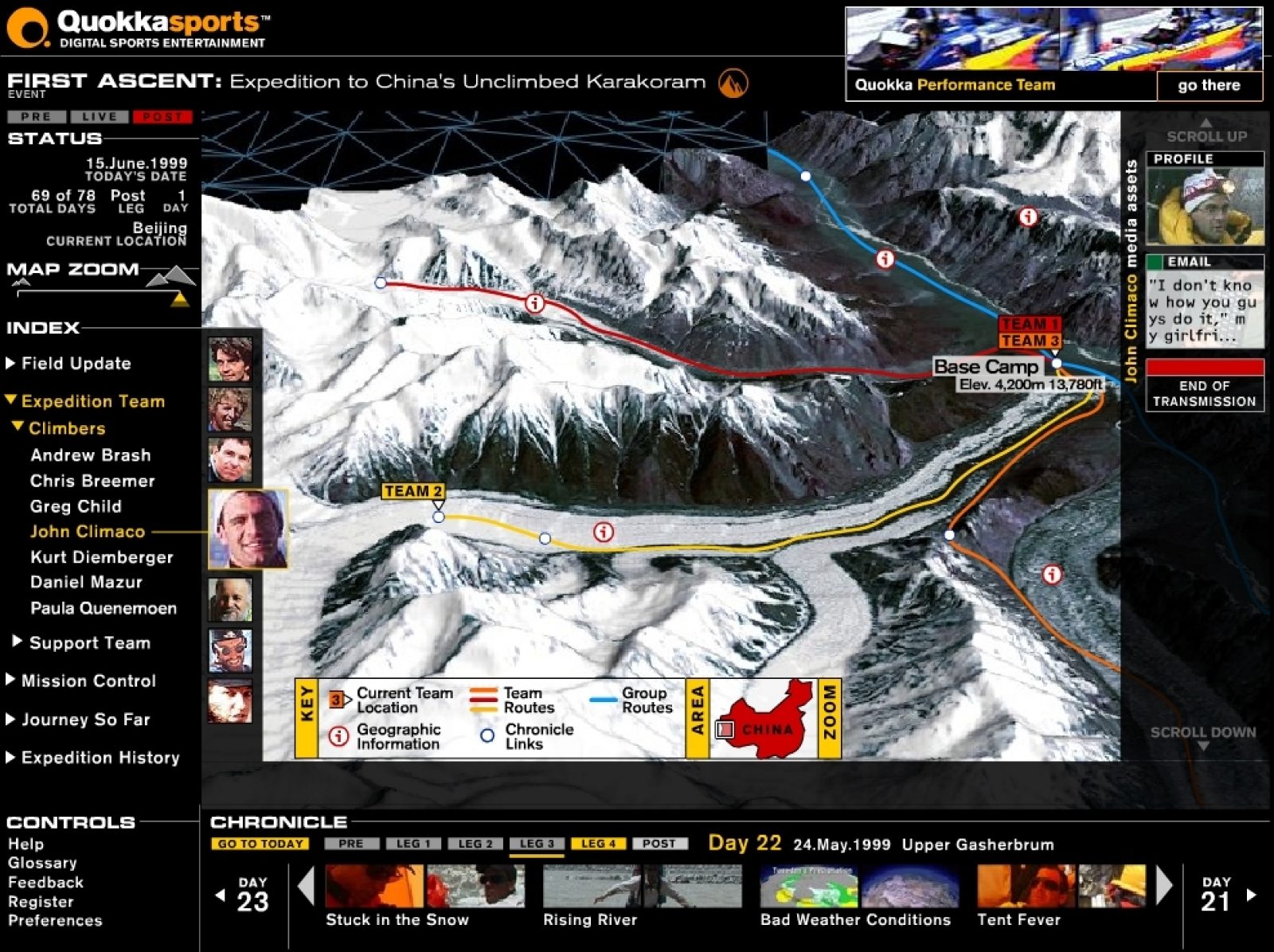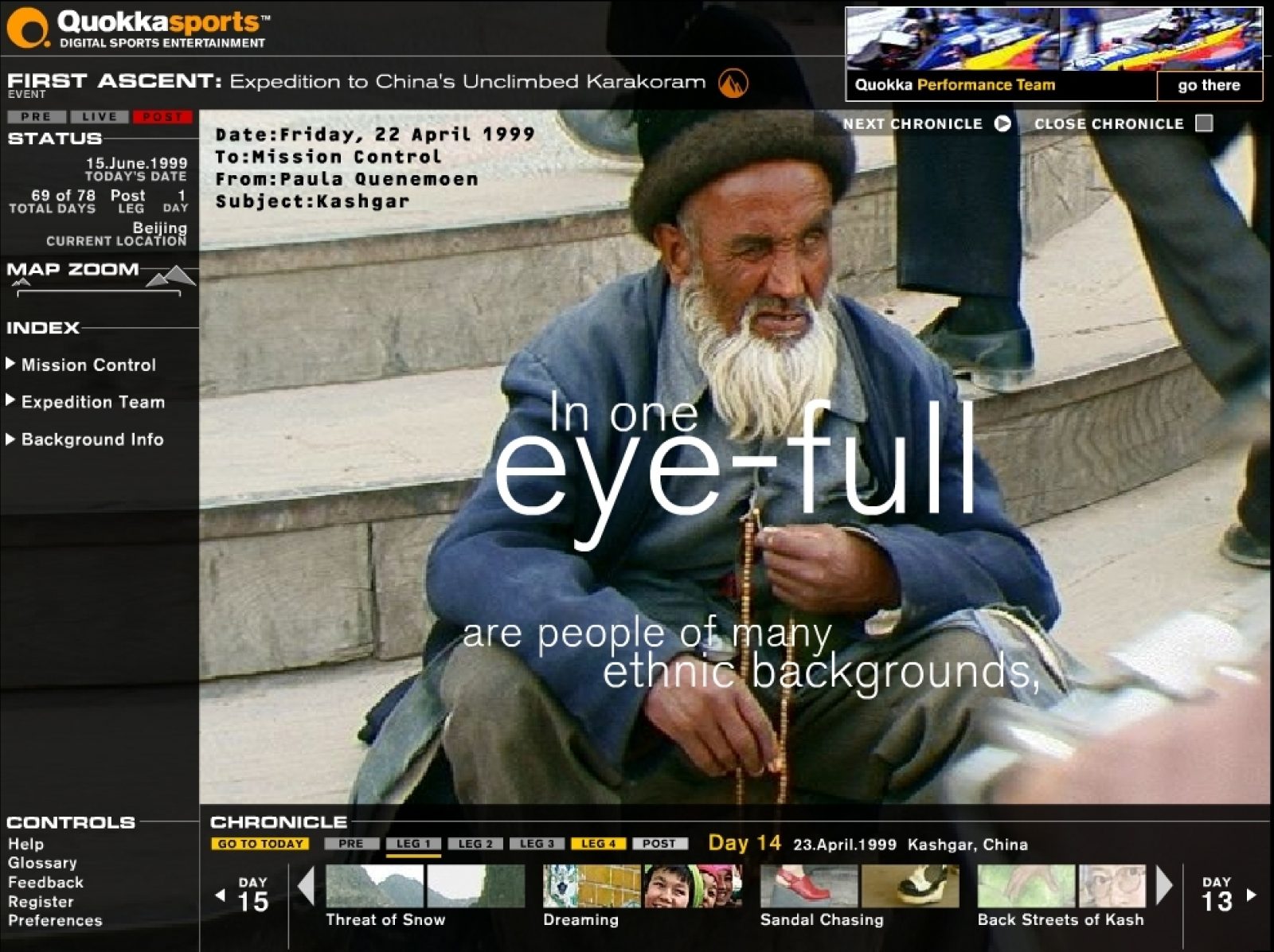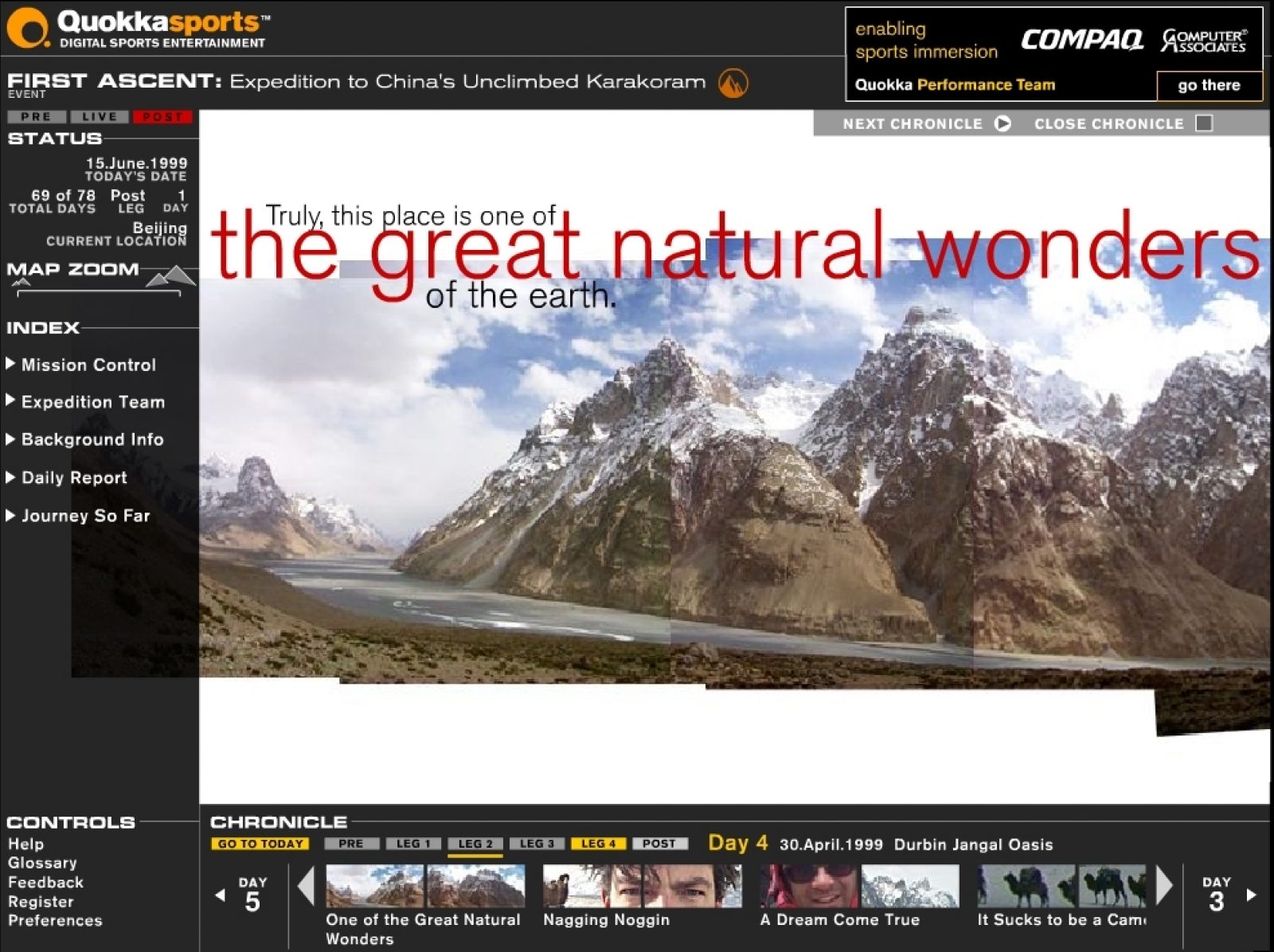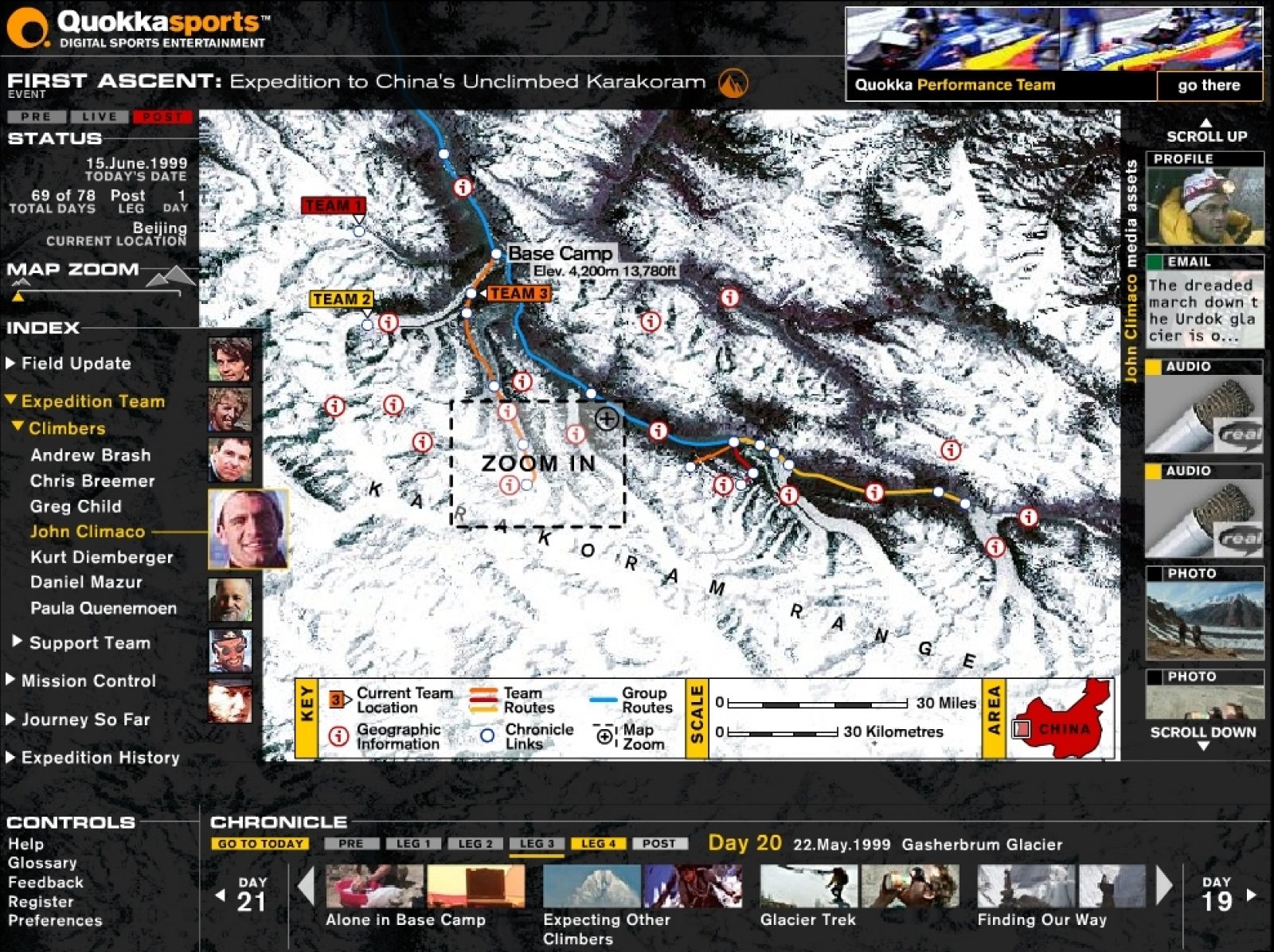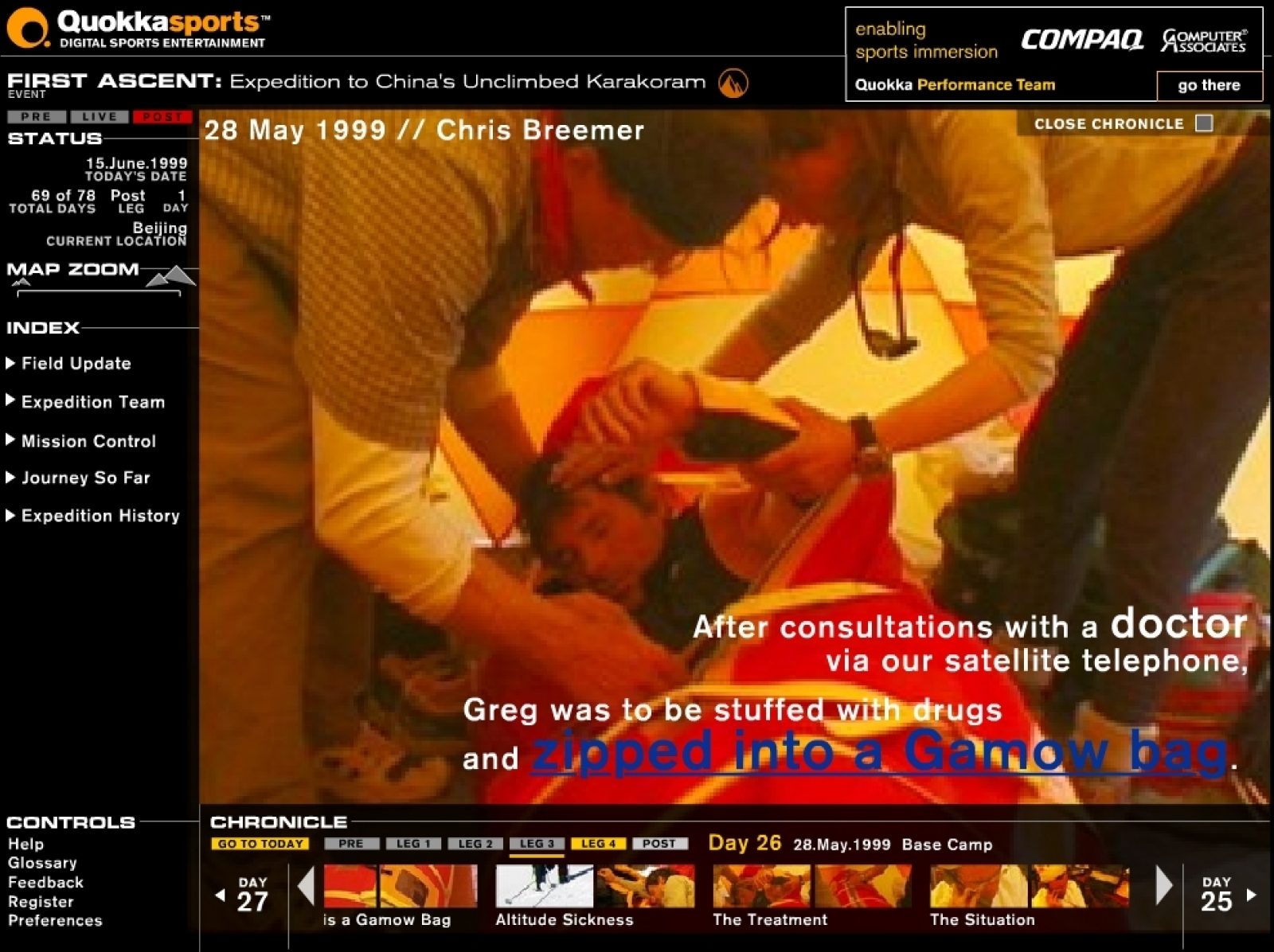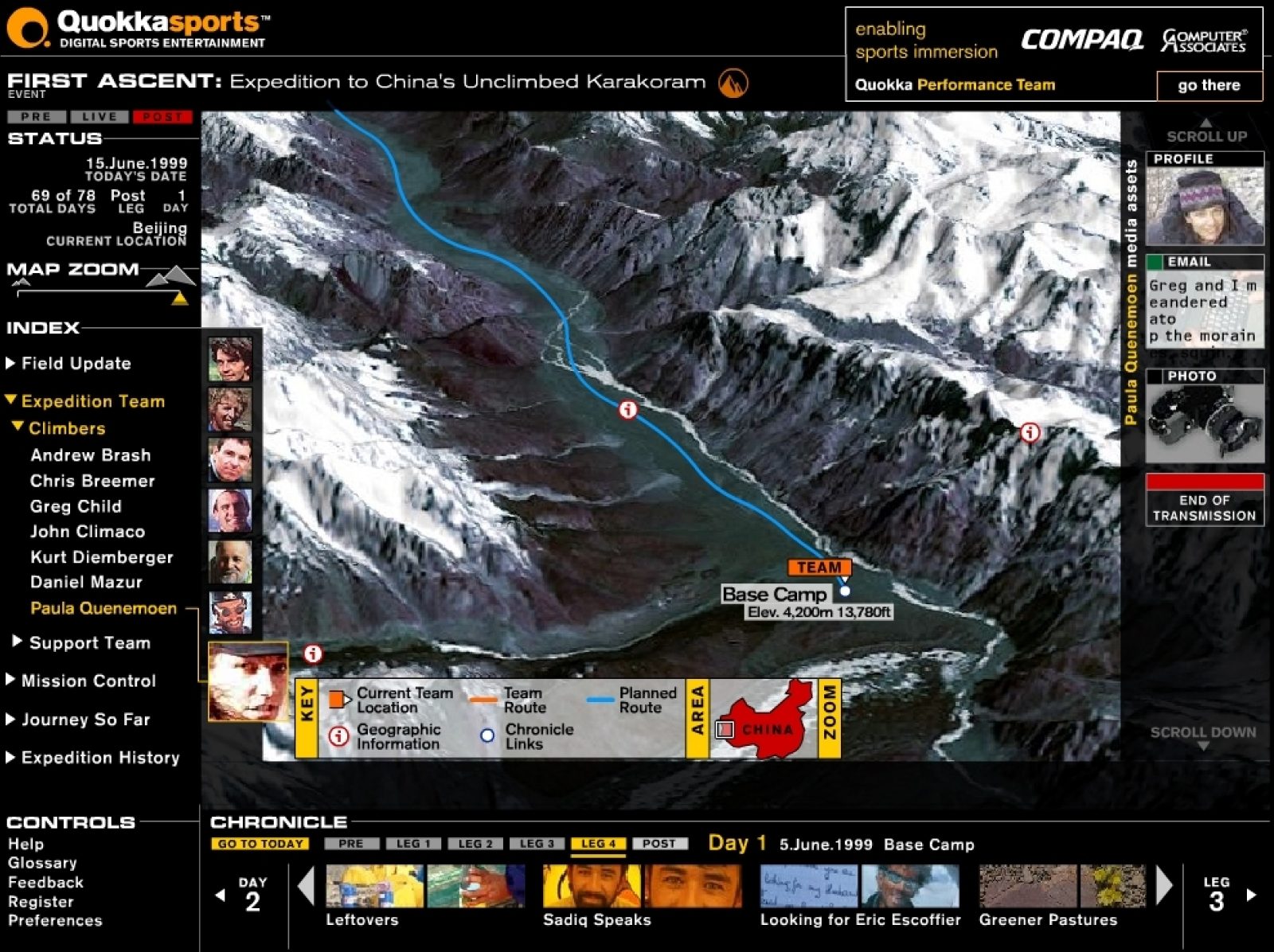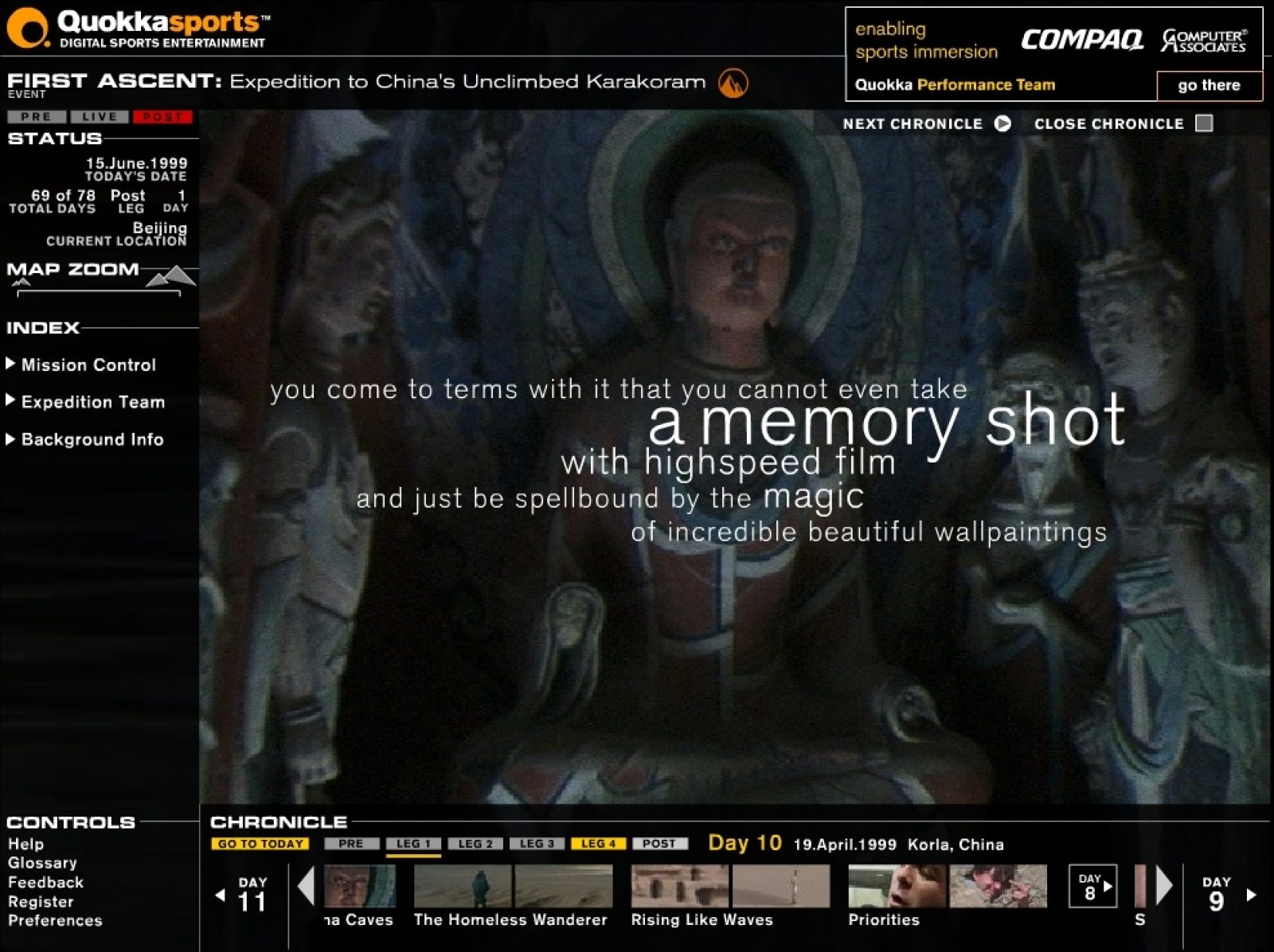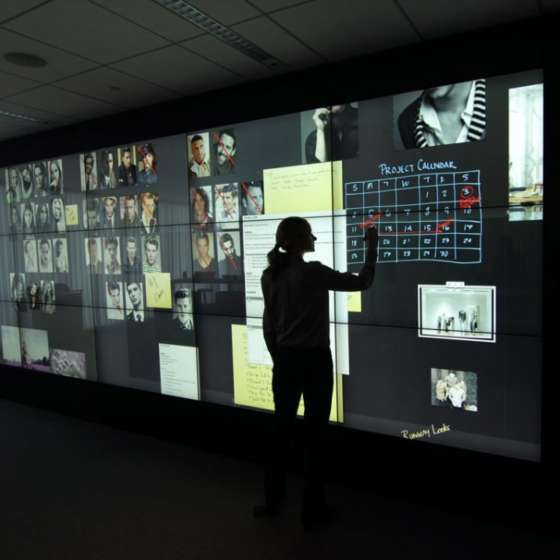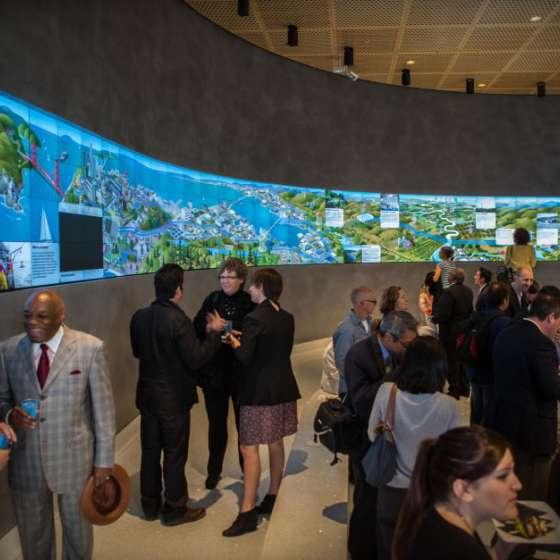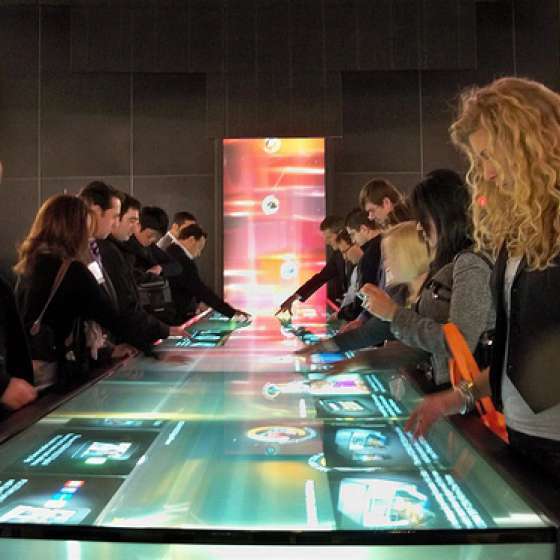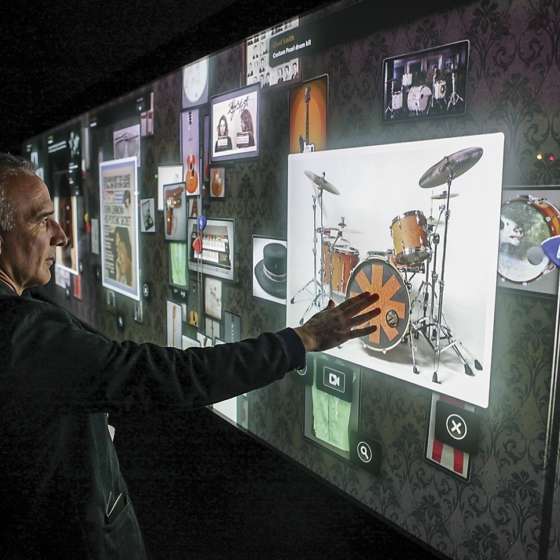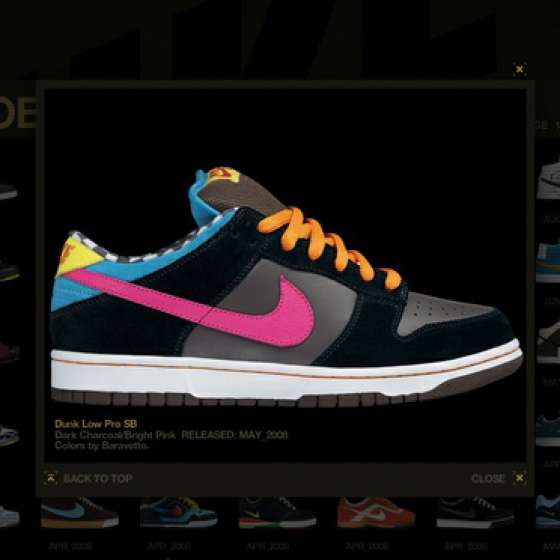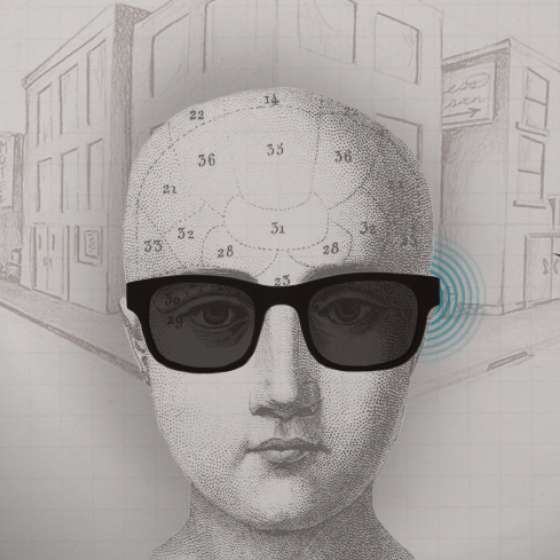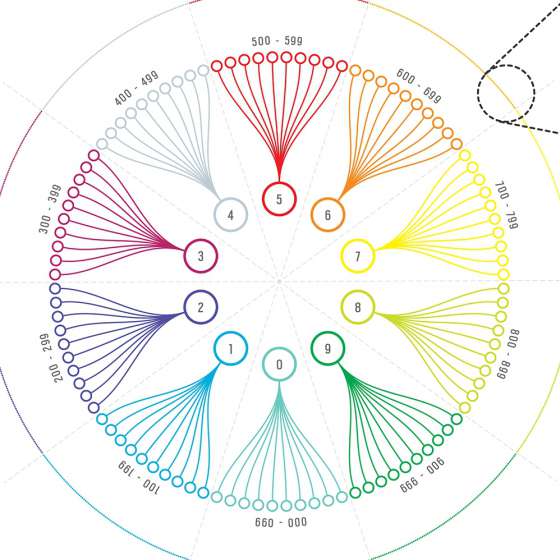Quokka was a startup from the late 90's that was attempting to reinvent sports coverage on the web. We created a first-person view into the athlete's world with helmet mounted cameras, biometric sensors, satellite connections, and a bunch of augmented storytelling. It was an exciting time, albeit a bit early, to explore cutting edge ways to stream live content through the internet.
After working with established events (Olympics, America's Cup, Moto GP, and others), we were given the opportunity to create our own live immersive event. Our Product Manager/Producer, John Climaco, a world-class mountain climber at the time, and was connected to some of the greatest living climbers. He came up with the idea of bringing a handful of of the best climbers to the most remote mountain range on the planet, the Karakoram range, split off into teams, and climb as many peaks as possible — naming each mountain as the reward for a first ascent. The idea was crazy, and brilliant. It was essentially an extreme sports reality show.
To make things even more interesting, the team drove all the way across China before packing on camels for two weeks deep into a disputed war zone at the intersection of India, China and Pakistan. What makes this area so difficult to get to is that the window to get in and out is very small (about 30 day) — after the snow recedes, but before the snow melt turns the valley floor into a raging river.
As we started planning the online experience, it became clear to all of us that we were blazing new trails around remote media streaming, video processing, digital mapping, realtime tracking, etc. Our engineering team wouldn't commit to our deadline, so I brought in a talented young engineer, Alon Salant (he became the co-founder of Carbon5 and GoodEggs), to help us out. He was excited for the challenged and gave us the confidence we needed.
I was passionate about interactive realtime mapping and wanted maps to anchor the experience, but at the time Google Maps, or any other map service for that matter, didn't exist. We couldn't even find satellite data in the US or India's government services for the area — in part because it was a sensitive/disputed area. A resourceful designer on our team, Josh Draper, made a connection with a decommissioned Russian spy agency and was able to secure high resolution satellite imagery and topographic data of the area we wanted to explore.
We chose to build the experience in Flash version 3 — my hair-brained idea. If you know about the history of Flash, then you'd know that there was no real coding in Flash v.3, no persistent variables, no saved state. It was pretty much worthless. But Macromedia had just released a tool called Flash Generator that could render dynamic Flash content through a backend service. Alon and I were able to piece it all together and, after many weeks with little sleep, we launched on schedule.
The rest is history (that not many people knew about because they were on dialup modems and this experience was a beast). Macromedia was so impressed with what we were able to do with Flash v.3, that they dedicated the entire back of the packaging for Flash v.4 (yeah, they used to physically ship software in boxes) to our project.
